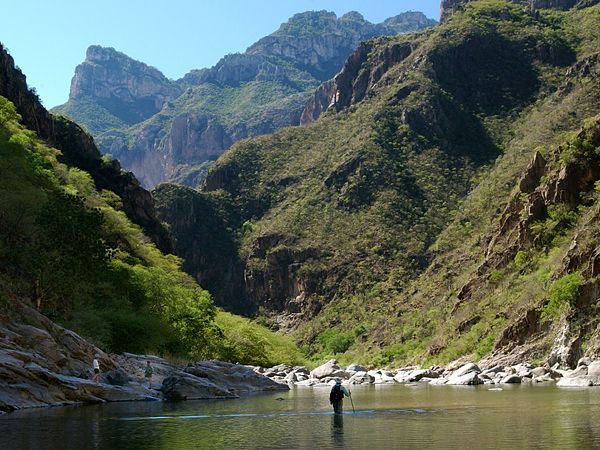Copper Canyon/Tararecua Canyon, Mexico

Best For: Desert rats looking to move on from southern Utah and the Grand Canyon; hikers who want wilderness mixed with indigenous culture
Distance: About 40 miles and 20,000 vertical feet
Copper Canyon is actually several canyons in Mexico’s Chihuahuan Desert carved by six rivers that merge into the Rio Fuerte. While none of the canyons are bigger than the Grand Canyon, several of them are deeper (the deepest, Urique Canyon, drops 6,165 feet). Stretching over 25,000 square miles, the region is far larger than its northern neighbor. A railway line chugs through the canyons, and the native Tarahumara (also known as the Rarámuri) live in towns in some of the most remote reaches.
The Tararecua Canyon, which cuts down 4,675 feet, is one of the best spots in the complex for wilderness hiking, especially because of the thermal springs at the bottom, ideal for recovering from the big hike. A hike across the canyon and back stops for a soak in Recohuata Hot Springs, crosses several rivers, and requires a bit of canyoneering savvy. There are steep bypasses and spots where a rope could come in handy. It also stops in the Tarahumara village of Pamachi.
The Tarahumara have inhabited the canyons since long before the conquistadors and still live according to many ancient traditions, the most well known in the U.S. being their prowess as long-distance runners. Their barefoot running technique and the Copper Canyon Ultramarathon were made famous in Christopher McDougall’s Born to Run, which precipitated the current trend of minimal or barefoot running. But, of course, you don’t have to go without hiking boots to experience the canyons alongside their native inhabitants. Just remember to leave a small gift, a sign of respect in Tarahumara culture.
When to Go: This is a prime shoulder-season hike, with temperatures most accommodating from March to April and October to November.
Insider Tip: “Bring a jacket,” says Will Harlan, the only non-Tarahumara to win the Copper Canyon Ultramarathon. “The 4,000-[foot] differential between canyon floor and rim means large temperature fluctuations. It can snow on the cooler canyon rim while being balmy on the canyon floor below.”































![10 best airports in Asia in 2016 [RANKED] kuala-lumpur-international-airport-best airports in asia in 2016 by skytrax ratings](https://livingnomads.com/wp-content/uploads/2016/08/29/kuala-lumpur-international-airport-best-airports-in-asia-in-2016-by-skytrax-ratings-218x150.jpg)





















